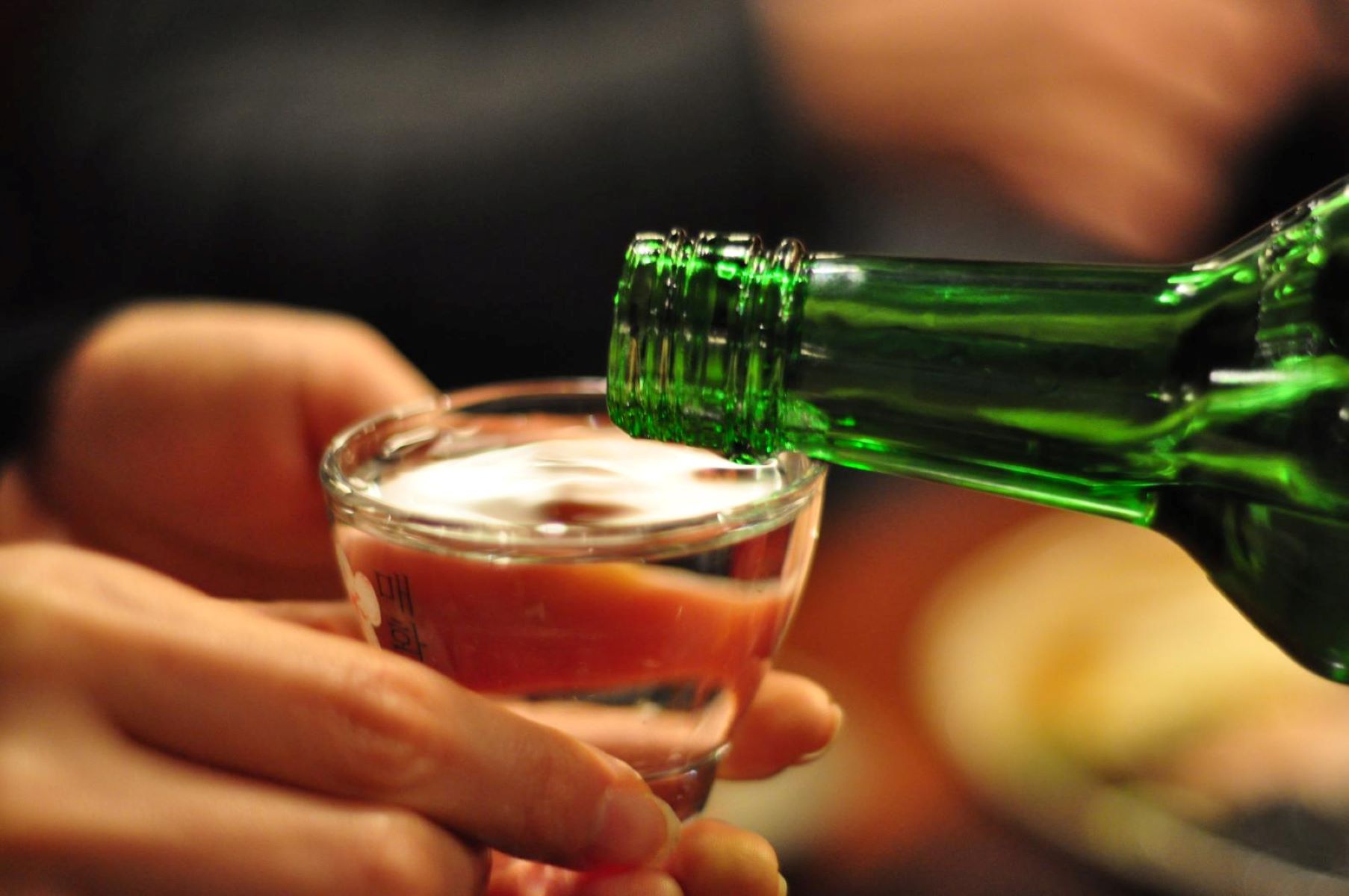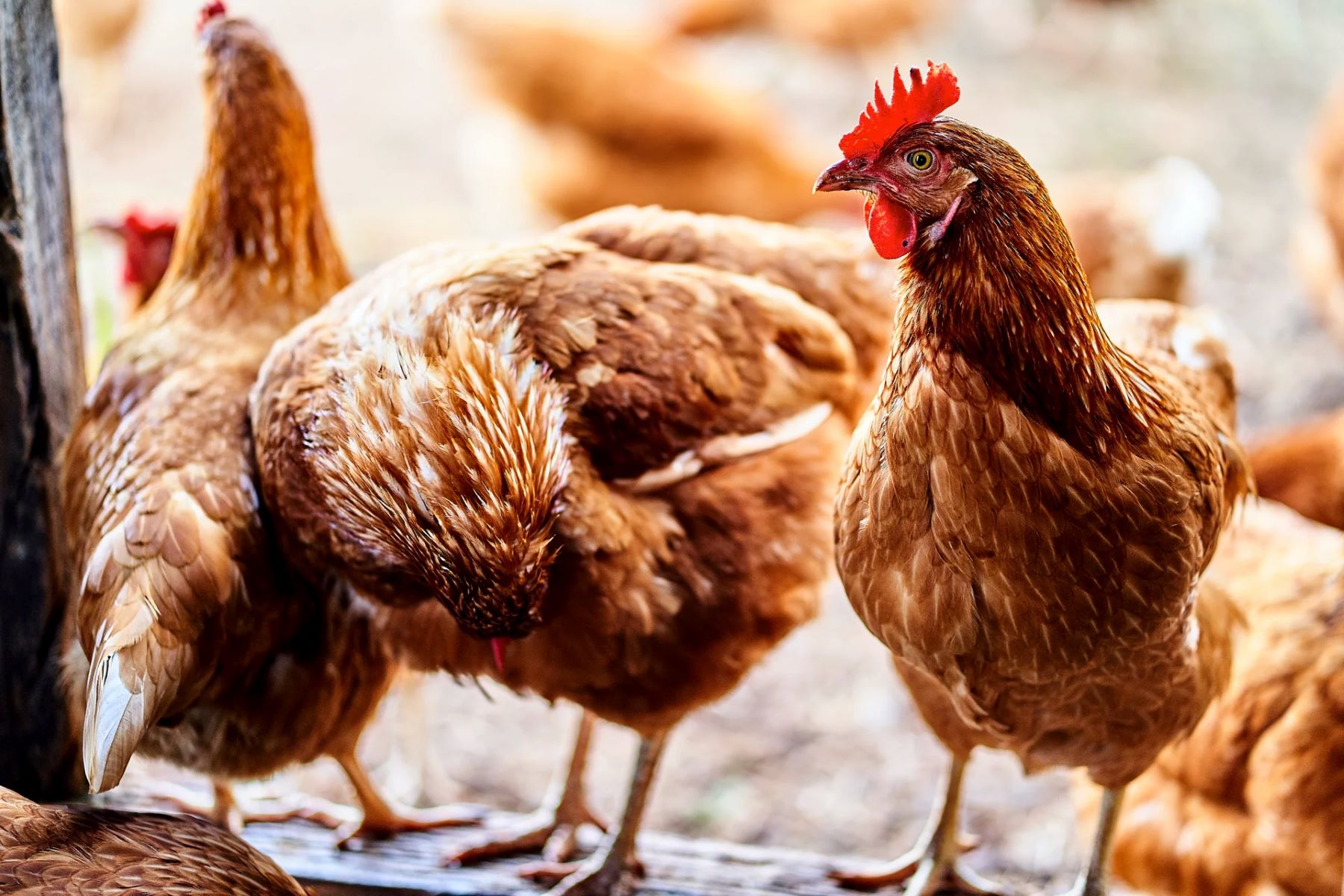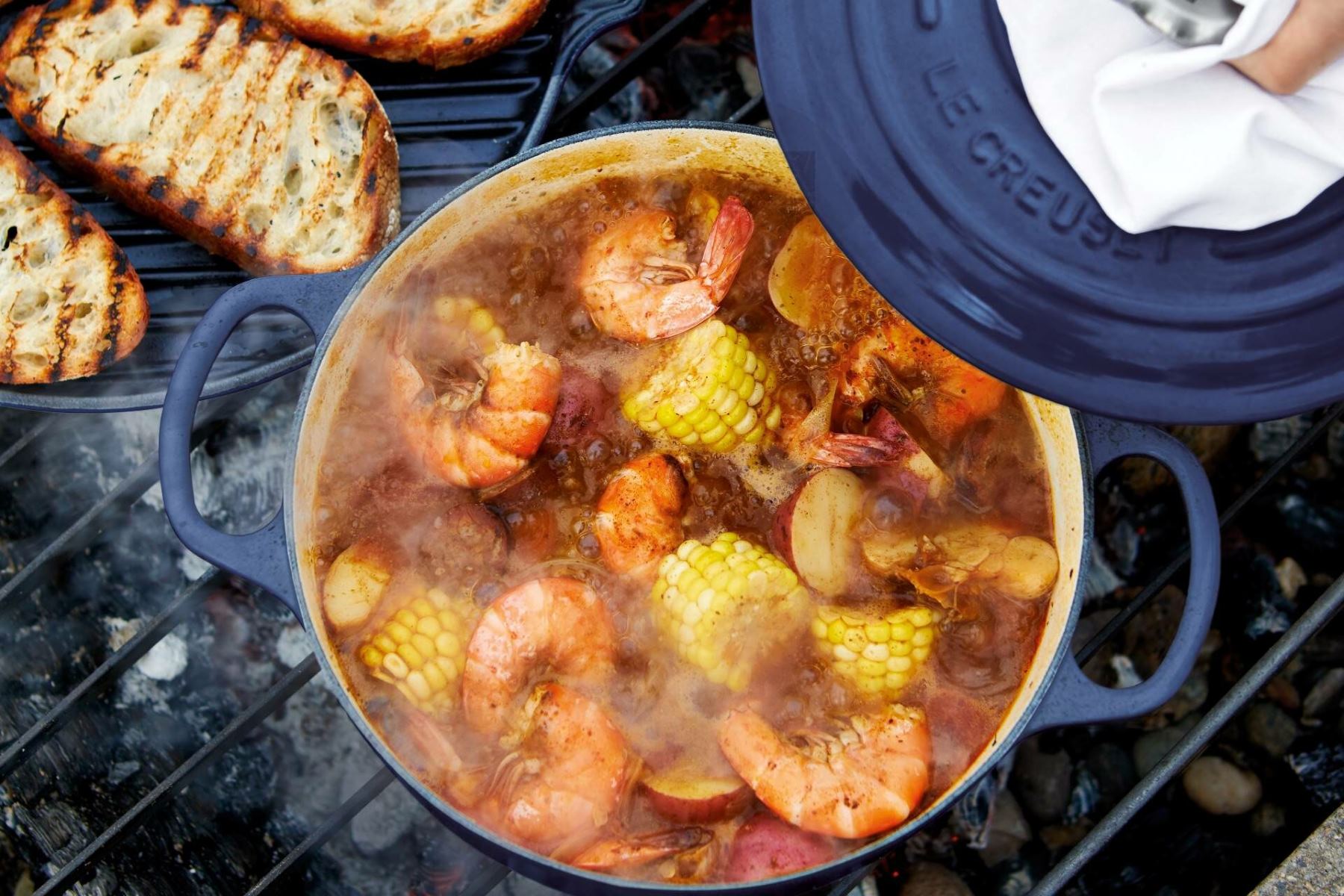Home>Food and Cooking>The Surprising Number Of Soju Shots Needed To Get Drunk!


Food and Cooking
The Surprising Number Of Soju Shots Needed To Get Drunk!
Published: January 14, 2024
Discover the surprising number of soju shots needed to get drunk! Explore this fascinating insight and more in our food and cooking blog. Uncover the secrets now!
(Many of the links in this article redirect to a specific reviewed product. Your purchase of these products through affiliate links helps to generate commission for Regretless.com, at no extra cost. Learn more)
Table of Contents
Introduction
Soju, a clear distilled liquor that originated in Korea, has gained international popularity for its smooth taste and relatively high alcohol content. It has become a staple in Korean culture and has made its mark on the global stage as well. As with any alcoholic beverage, understanding the impact of soju consumption on the body is crucial for responsible and safe enjoyment.
In this article, we delve into the world of soju and explore the surprising number of shots needed to feel its effects. We will examine the factors that influence alcohol absorption, the relationship between soju consumption and blood alcohol content, and provide insights into how to enjoy soju responsibly.
Whether you're a seasoned soju enthusiast or someone curious about this iconic Korean spirit, this exploration will shed light on the intriguing dynamics of soju consumption and its effects on the body. Let's embark on this journey to unravel the mysteries of soju and its intoxicating potential.
Understanding Soju
Soju, often referred to as Korea's national drink, holds a significant place in Korean culture and has garnered attention worldwide. This iconic spirit is a clear, colorless distilled beverage with a smooth, clean taste, making it a versatile choice for various occasions. Its alcohol content typically ranges from 16% to 25%, although variations with higher alcohol content are also available.
The production of soju involves the fermentation of starches, such as rice, wheat, or barley. Modern variations may incorporate other ingredients, such as sweet potatoes or tapioca, resulting in a diverse range of flavors and textures. The distillation process contributes to its purity and clarity, distinguishing it from other traditional Korean alcoholic beverages.
Soju is commonly enjoyed neat, on the rocks, or as a base for cocktails, showcasing its adaptability and appeal to a broad spectrum of palates. Its widespread availability and affordability have contributed to its popularity, making it a go-to choice for social gatherings, celebrations, and casual outings.
In Korean tradition, soju holds a symbolic role in fostering camaraderie and strengthening social bonds. The practice of "one shot" rituals, where participants share a shot of soju as a gesture of unity and friendship, reflects the cultural significance attached to this revered beverage.
Furthermore, the influence of soju extends beyond its consumption, permeating various aspects of Korean cuisine and lifestyle. It serves as a complement to a diverse array of dishes, enhancing the dining experience with its subtle flavors and harmonious pairing capabilities.
Understanding the cultural and sensory dimensions of soju provides valuable insights into its widespread appeal and enduring legacy. Its rich history, coupled with its modern-day prominence, underscores the enduring allure of this beloved Korean spirit.
Intriguingly, the distinct characteristics of soju, from its production methods to its consumption customs, contribute to its mystique and allure, captivating enthusiasts and curious imbibers alike. This multifaceted understanding sets the stage for a deeper exploration of the impact of soju consumption on the body, a journey that promises to unravel the intriguing dynamics of this iconic spirit.
This comprehensive understanding of soju sets the stage for an exploration of the factors that influence alcohol absorption, shedding light on the surprising number of shots needed to feel its effects. Let's delve deeper into this captivating realm to uncover the fascinating interplay between soju and the human body.
Factors Affecting Alcohol Absorption
Alcohol absorption, a pivotal aspect of understanding the effects of soju consumption, is influenced by a myriad of factors that encompass physiological, behavioral, and environmental elements. These variables collectively contribute to the rate at which alcohol enters the bloodstream, ultimately impacting the intoxicating effects experienced by individuals.
1. Body Weight and Composition
The physiological makeup of an individual plays a significant role in alcohol absorption. Body weight and composition can influence the distribution of alcohol in the body, with higher body fat percentage potentially leading to a slower absorption rate. Additionally, variations in metabolism and enzymatic activity contribute to the diverse responses observed among individuals of different body compositions.
2. Food Intake
The presence of food in the stomach can substantially affect alcohol absorption. Consuming soju on an empty stomach accelerates its entry into the bloodstream, intensifying its effects. In contrast, having a meal before drinking can delay the absorption process, as the food acts as a buffer, slowing down the release of alcohol into the bloodstream.
3. Alcohol Concentration
The alcohol content of soju directly impacts its absorption rate. Higher concentrations result in faster absorption, leading to more immediate and pronounced effects. Conversely, lower alcohol concentrations may necessitate higher consumption levels to achieve similar intoxicating outcomes.
4. Drinking Speed
The pace at which soju is consumed influences alcohol absorption. Rapid consumption can overwhelm the body's metabolic capacity, leading to a rapid surge in blood alcohol content. Conversely, moderate and controlled consumption allows for more gradual absorption, potentially mitigating the intensity of its effects.
5. Tolerance and Genetics
Individuals with a higher tolerance for alcohol may exhibit different absorption patterns compared to those with lower tolerance levels. Genetic factors also contribute to variations in alcohol metabolism, impacting how quickly the body processes and eliminates alcohol from the system.
6. Gender Differences
Gender disparities in alcohol absorption stem from variations in body composition, enzyme activity, and hormonal influences. Women generally experience higher blood alcohol concentrations than men when consuming the same amount of alcohol due to differences in body water content and enzyme levels.
7. Hydration and Health
Hydration levels and overall health status can influence alcohol absorption. Dehydration accelerates alcohol absorption, intensifying its effects and potentially leading to adverse outcomes. Conversely, optimal hydration and good health may mitigate the rapid escalation of blood alcohol content.
Understanding these multifaceted factors provides valuable insights into the intricate interplay between soju consumption and its impact on the body. By recognizing the diverse influences that shape alcohol absorption, individuals can make informed decisions and cultivate a responsible approach to enjoying soju.
This exploration sets the stage for a deeper examination of the relationship between soju consumption and blood alcohol content, unraveling the surprising dynamics that govern the intoxicating potential of this iconic Korean spirit.
Soju and Blood Alcohol Content
The relationship between soju consumption and blood alcohol content is a critical aspect that shapes the intoxicating potential of this beloved Korean spirit. As individuals partake in soju, the alcohol present in the beverage undergoes a complex journey within the body, ultimately influencing blood alcohol concentration and the resulting effects experienced.
The alcohol content of soju, typically ranging from 16% to 25%, plays a pivotal role in determining the trajectory of blood alcohol content. Upon consumption, the alcohol swiftly enters the bloodstream through the gastrointestinal tract, initiating its assimilation into the body's circulation. The rate at which this occurs is influenced by several factors, including the individual's physiological characteristics, the presence of food in the stomach, and the speed of consumption.
The absorption process sets the stage for the escalation of blood alcohol content, marking the transition from sober to inebriated states. The concentration of alcohol in the blood, quantified as blood alcohol content (BAC), serves as a measure of intoxication and governs the physiological and behavioral manifestations of alcohol consumption.
The dynamics of soju and blood alcohol content are underscored by the interplay of absorption, distribution, metabolism, and elimination processes within the body. As soju is absorbed into the bloodstream, it permeates various bodily tissues, leading to the manifestation of its effects on the central nervous system and other physiological functions. The resulting BAC reflects the equilibrium between alcohol absorption and elimination, offering insights into the degree of intoxication experienced by individuals.
The impact of soju on blood alcohol content is further influenced by the aforementioned factors affecting alcohol absorption, such as body weight, food intake, alcohol concentration, drinking speed, tolerance, genetics, gender differences, hydration, and health status. These variables collectively shape the trajectory of BAC, highlighting the intricate and nuanced nature of alcohol metabolism and its effects on the body.
Understanding the relationship between soju consumption and blood alcohol content empowers individuals to make informed choices and cultivate a responsible approach to enjoying this iconic Korean spirit. By recognizing the interplay of alcohol absorption, distribution, and elimination, individuals can navigate the intoxicating potential of soju with mindfulness and awareness, fostering a harmonious balance between enjoyment and responsible consumption.
This exploration illuminates the captivating dynamics that govern the impact of soju on blood alcohol content, providing a deeper appreciation for the interwoven elements that define the intoxicating experience. As individuals embark on their soju journey, this understanding serves as a guiding light, shaping their interactions with this iconic spirit and fostering a culture of informed and responsible enjoyment.
Conclusion
In conclusion, the captivating world of soju unveils a tapestry of cultural significance, sensory allure, and intriguing dynamics that govern its impact on the human body. As we embarked on this exploration, we delved into the multifaceted dimensions of soju, unraveling its historical legacy, production intricacies, and its role as a cornerstone of Korean culture. This journey provided valuable insights into the enduring appeal and versatile nature of soju, setting the stage for a deeper examination of its intoxicating potential.
The interplay of factors affecting alcohol absorption shed light on the surprising number of soju shots needed to feel its effects. From body weight and composition to drinking speed and genetic influences, the diverse variables that shape alcohol metabolism underscore the complexity of soju's impact on the body. Understanding these factors empowers individuals to make informed choices and approach soju consumption with mindfulness and responsibility.
Furthermore, our exploration of the relationship between soju consumption and blood alcohol content illuminated the intricate dynamics that govern the intoxicating experience. The assimilation of soju into the bloodstream, its distribution within the body, and the resulting equilibrium of blood alcohol content unveil the captivating journey of soju's effects on the human physiology. This understanding serves as a guiding compass, fostering a culture of informed and responsible enjoyment of this iconic Korean spirit.
As individuals navigate the realm of soju, this comprehensive understanding enriches their interactions with this revered beverage, fostering a harmonious balance between enjoyment and responsible consumption. By recognizing the interwoven elements that define the intoxicating experience, individuals can savor the cultural and sensory dimensions of soju while embracing a mindful approach to its consumption.
In essence, the surprising number of soju shots needed to get drunk is intricately woven into the tapestry of cultural traditions, sensory allure, and physiological dynamics. This exploration serves as an invitation to embrace the captivating world of soju with reverence and awareness, fostering a culture of responsible enjoyment while honoring its rich heritage and enduring legacy. As we raise our glasses to the allure of soju, let us embark on this journey with a spirit of appreciation, mindfulness, and camaraderie, celebrating the timeless essence of this iconic Korean spirit.













